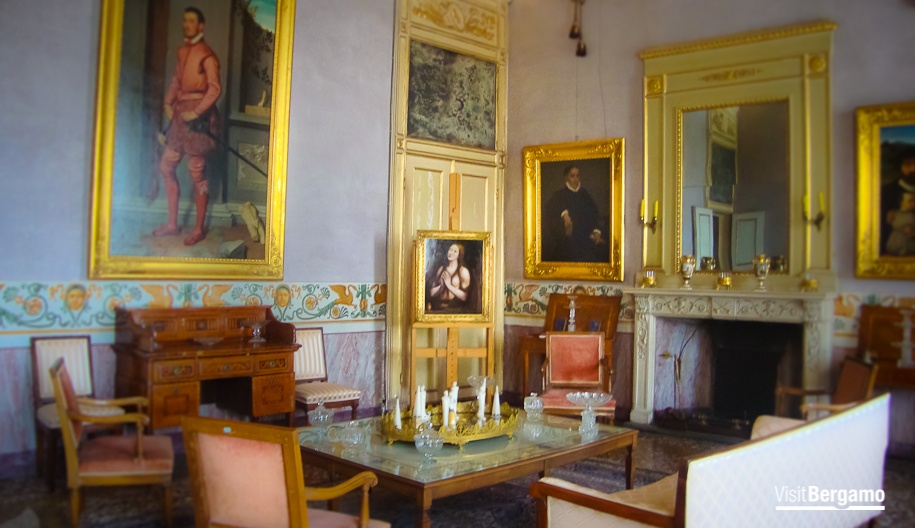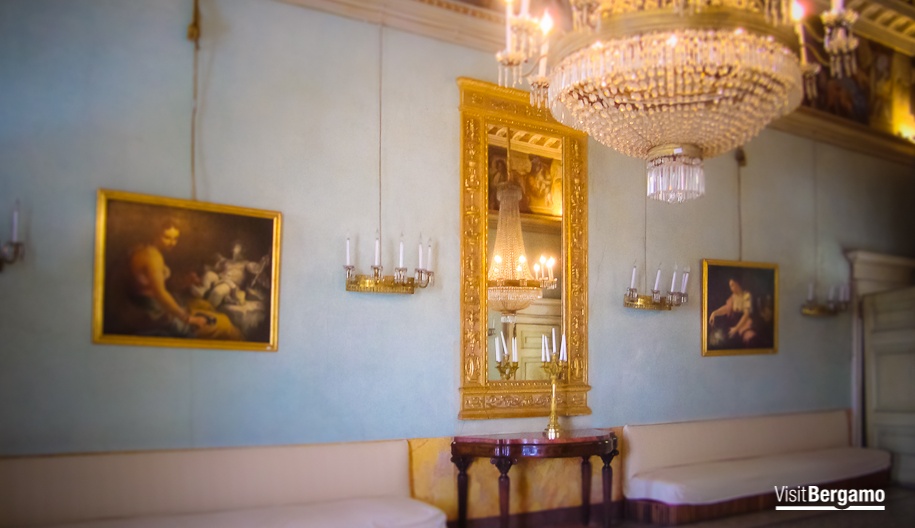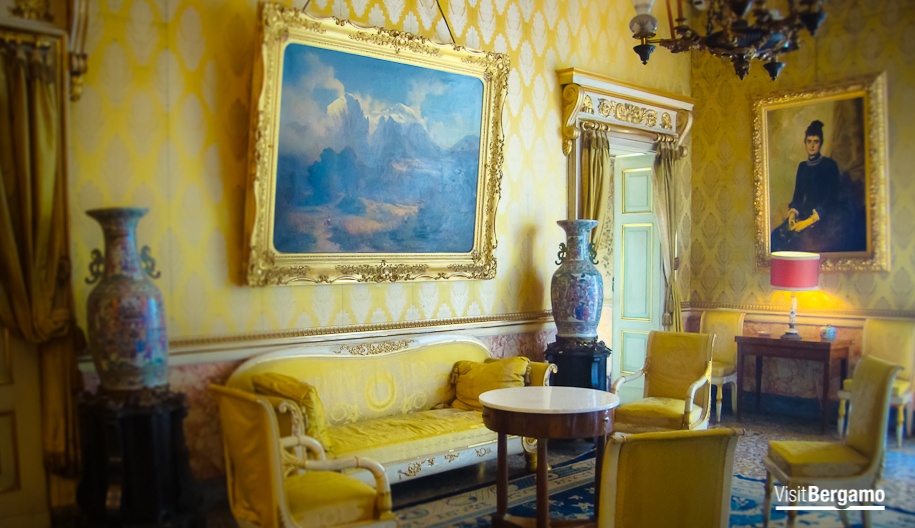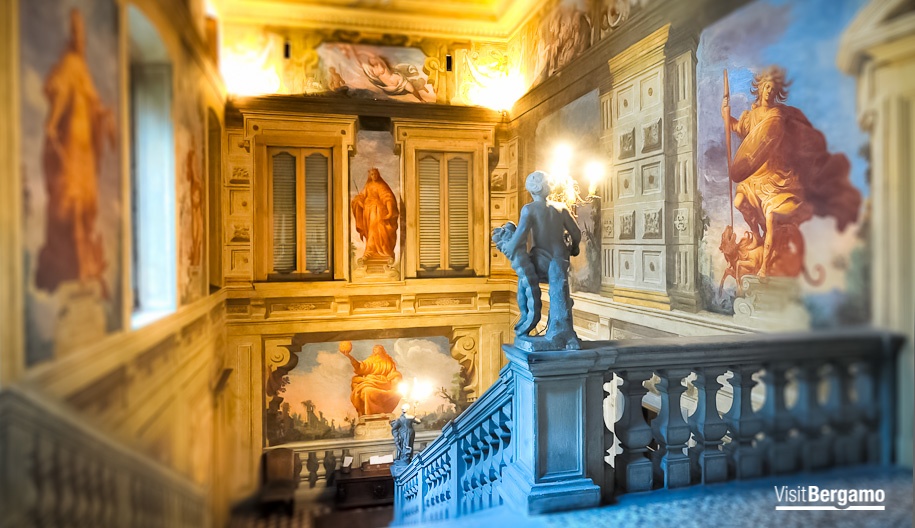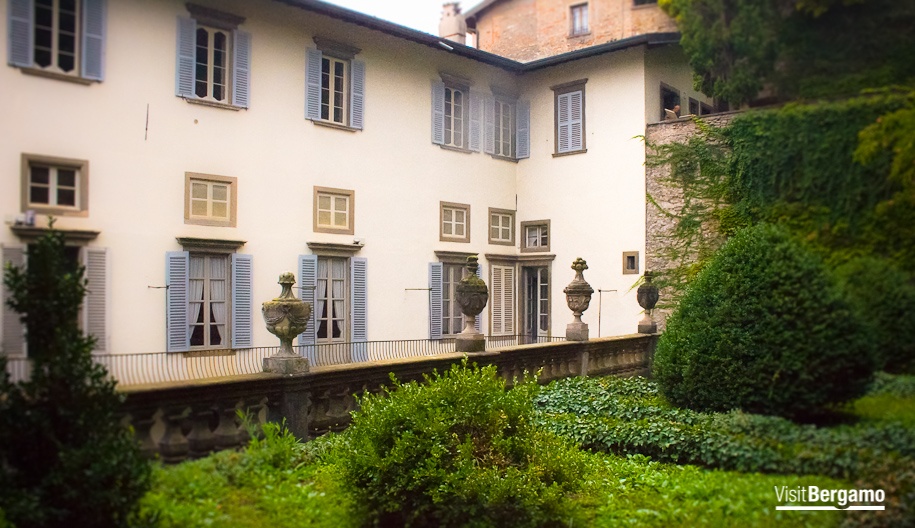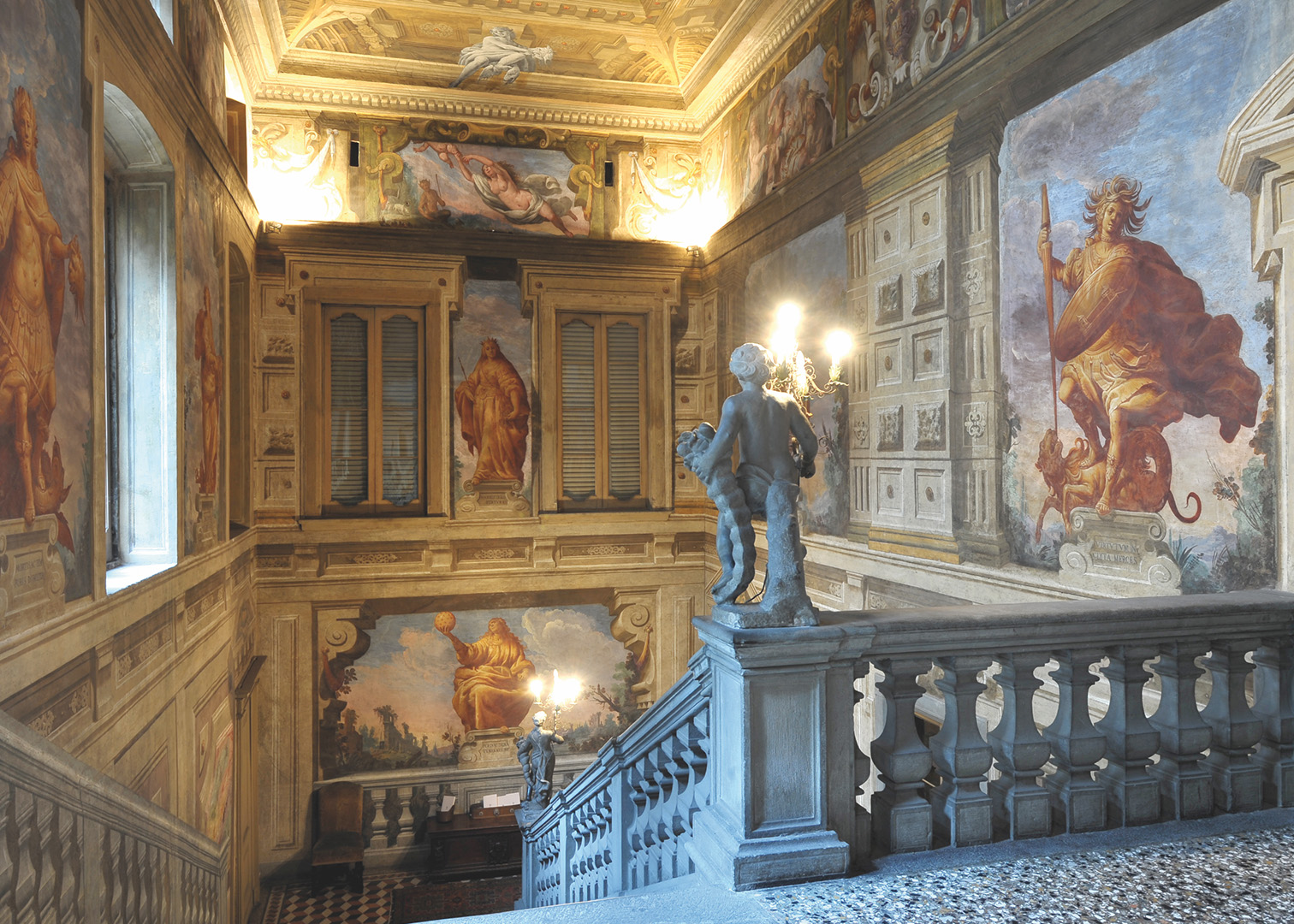Palazzo Moroni stands on Via Porta Dipinta (Upper Town) and features exceptionally well-preserved interiors and furnishings, as well as a rich art collection and an Italianate garden with extensive orangery. The magnificent building thus offers visitors not only art and history, but also a charming historic park in the heart of Bergamo Alta.
Moroni Palace: A Family Legacy in Art Preservation
The Moroni family has owned and lived in the palace since 1636. The original layout has been carefully maintained and preserved; the monumental Scalone leads from the entrance courtyard to the main floor, behind whose doors are halls and salons frescoed and furnished between the seventeenth and nineteenth centuries.
In the larger rooms the evidence of Barbelli‘s fresco mastery persists in all its beauty, and here is also preserved the extensive and varied Moroni Collection, where the famous portraits of Gian Gerolamo Grumelli (Il Cavaliere in Rosa) and Isotta Brembati, executed by the painter Giovanni Battista Moroni of Albino, stand out in addition to works by Bernardino Luini, Cesare Tallone.
Moroni Gardens: From Medieval Tower to Mulberry Groves
Since its construction, the palace has overlooked a complex of Italian-style gardens, articulated in a balcony and three terraces that run along the hillside of Sant’Eufemia. The third and highest terracing gives access to the Count’s Pensatoio, a neo-medieval-style turret built in the 19th century on the remains of an older structure, formerly belonging to the Civic fortress, which encircles the top of the hill.
Beyond the actual gardens lie about two hectares of orchard, which was annexed to the property during the 19th century by brothers Pietro and Alessandro Moroni, the latter a scholar of agronomy. The area still contains vines raised on pergola, fruit trees and a roccolo, that is, a circle of hornbeam trees, whose intertwined branches served as nets to hunt live birds for food and play. There is also no shortage of mulberry trees, one of the symbols of the family, enriched by the breeding of silkworms, which feed on the very leaves of this tree.
The Opening of Palazzo Moroni to the Public
Thanks to the agreement between FAI – Fondo per l’Ambiente Italiano and the Palazzo Moroni Museum Foundation in December 2019, aimed at the restoration, management and enhancement of the splendid Bergamasque palace, Palazzo and Giardini Moroni are now regularly open to the public .
What to See in Palazzo Moroni
The Moroni collection is a journey through Lombard art:
- G.B. Moroni’s Knight in Pink, an icon of Mannerism
- Frescoes by Giovan Battista Barbelli in the Hall of Mirrors
- Portrait of Isotta Brembati, a masterpiece of the late sixteenth century
- Works by Cesare Tallone and eighteenth-century sketches
The terraced gardens, divided into three levels, combine utility and beauty:
- Formal garden with boxwood hedges and central fountain
- Historic orchard with old varieties of apple and pear trees
- Roccolo – rare example of plant architecture for birding
Don’t miss the Neomedieval Tower, a 19th-century count’s retreat with panoramic views of Bergamo.
Visit info and tickets on the FAI website.





